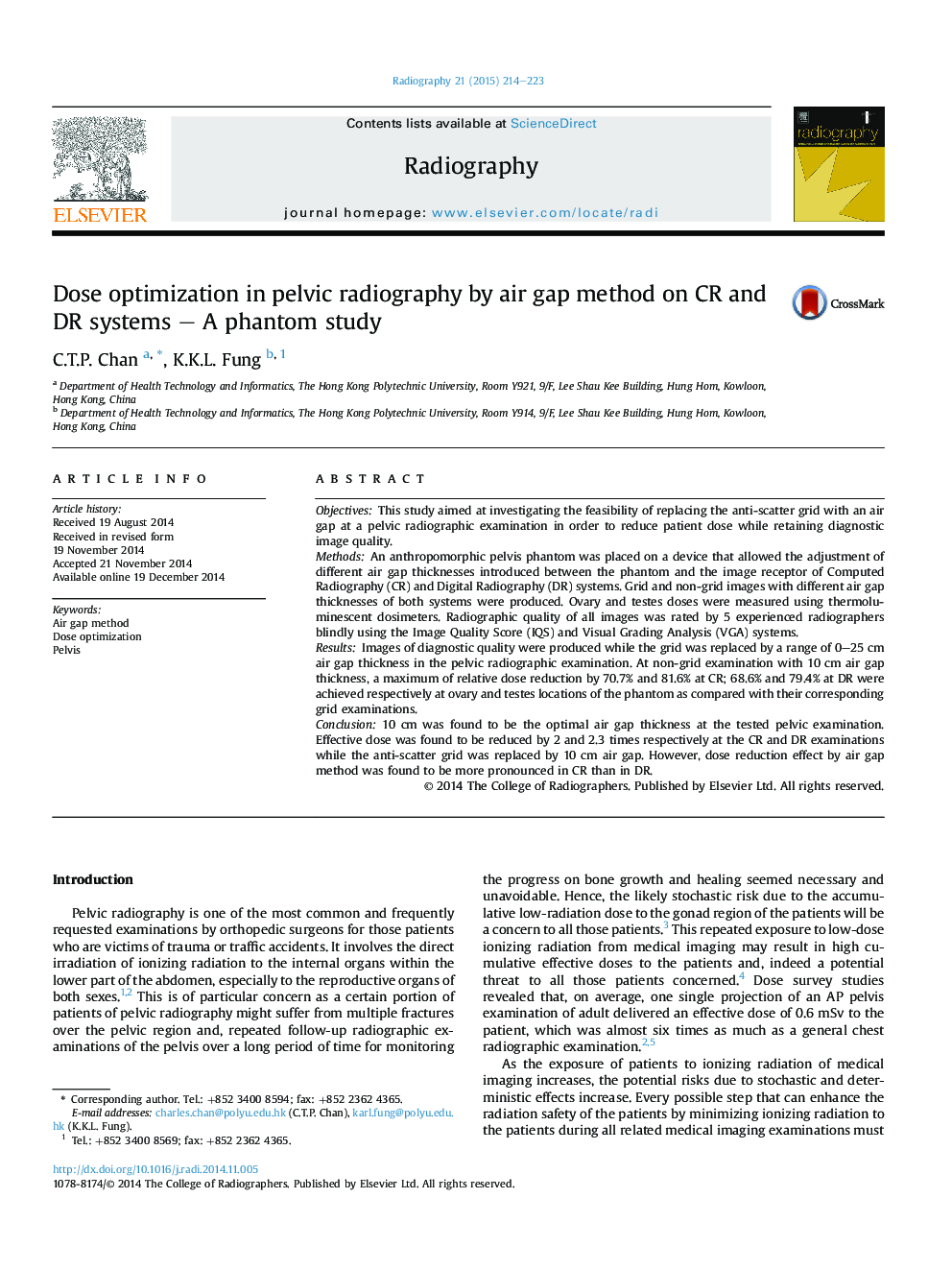| کد مقاله | کد نشریه | سال انتشار | مقاله انگلیسی | نسخه تمام متن |
|---|---|---|---|---|
| 2735721 | 1147762 | 2015 | 10 صفحه PDF | دانلود رایگان |

• 10 cm air gap was found to be a substitute to replace grid in pelvic RANDO in CR/DR.
• Over 68.6% of dose reduction effect were achieved at the ovary and testes regions.
• Over 76.4% of reduction in effective dose were achieved at both the tested regions.
• Dose reduction by air gap method was found to be more pronounced in CR than in DR.
ObjectivesThis study aimed at investigating the feasibility of replacing the anti-scatter grid with an air gap at a pelvic radiographic examination in order to reduce patient dose while retaining diagnostic image quality.MethodsAn anthropomorphic pelvis phantom was placed on a device that allowed the adjustment of different air gap thicknesses introduced between the phantom and the image receptor of Computed Radiography (CR) and Digital Radiography (DR) systems. Grid and non-grid images with different air gap thicknesses of both systems were produced. Ovary and testes doses were measured using thermoluminescent dosimeters. Radiographic quality of all images was rated by 5 experienced radiographers blindly using the Image Quality Score (IQS) and Visual Grading Analysis (VGA) systems.ResultsImages of diagnostic quality were produced while the grid was replaced by a range of 0–25 cm air gap thickness in the pelvic radiographic examination. At non-grid examination with 10 cm air gap thickness, a maximum of relative dose reduction by 70.7% and 81.6% at CR; 68.6% and 79.4% at DR were achieved respectively at ovary and testes locations of the phantom as compared with their corresponding grid examinations.Conclusion10 cm was found to be the optimal air gap thickness at the tested pelvic examination. Effective dose was found to be reduced by 2 and 2.3 times respectively at the CR and DR examinations while the anti-scatter grid was replaced by 10 cm air gap. However, dose reduction effect by air gap method was found to be more pronounced in CR than in DR.
Figure optionsDownload high-quality image (114 K)Download as PowerPoint slide
Journal: Radiography - Volume 21, Issue 3, August 2015, Pages 214–223